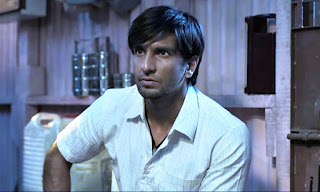I caught up with Gully Boy for the second time in two weeks yesterday and discovered new layers to it. Almost every scene is a deliberate, elaborate canvas to a young man’s reluctant, undying passion for rap and hip-hop. This is no one-time watch, though nothing can ever match the exuberance, freshness and addictive vibe of a first time Gully Boy viewing.
Never has been the depiction of India’s poor felt so real. We feel that we are in the heart of Dharavi, supposedly the largest slum in Asia. By the way, this is in no way a 8 Mile remake, as many feared it would be before release. It is interesting how much of a deep pit poverty is – Like a father telling his son, and an uncle telling his nephew – That a driver’s son will end up as a driver. The inevitability of the pre-decided fate is heartbreaking.
One of the most favourite scenes from the movie is how Murad (Ranveer Singh) drives his employee’s daughter home. The daughter is clearly having a breakdown and crying, but Murad can’t reach out and comfort her, because their social statures do not allow such empathy.
The soundtrack is easily the best I have heard in ages. I am no fan of rap, and frankly Indian rappers showcased in music TV channels, are all about wealth, cars, girls, alcohol. Until viewing Gully Boy, I didn’t know that India had an alternate rap scene.
Despite the many songs, the treatment never takes the musical road, thus keeping the audience rooted in stark realities, which is the pulse of the movie. This is probably the best exploration of Indian class discrimination in a Hindi movie in a long, long time.
The force of tradition, ancestries and how one earns cuts across generations is beautifully showed here. Keeping it real, and how the characters feel lived in, adds to the movie’s strength. That is why, though you know the beats of an underdog tale, I was deeply invested in the characters.
Mirror to India’s poor: When was the last time you saw India’s poor highlighted in popular Hindi cinema? They were nowhere to be seen. Several Hindi movies just breeze over the pain of earning a living. Zoya Akhtar brings home their plight with great sensitivity and empathy, never falling into the trappings of self-pity or overemphasized pro-poor statements.
Murad’s defeated eyes: A Hindi film hero with defeated, subdued eyes? Yes, Ranveer Singh’s Murad sinks into our consciousness with a shy, uncertain, soft-spoken persona, and one so low in self-confidence that he can’t bring himself to sing his own poem before an audience. A vulnerable, earthy, impoverished and subdued underdog hero my heart beat for all through. Yes, poverty is the worst form of violence.
Turbulent, achingly real love story: Two childhood friends growing up to be fiery lovers over nine years, with an almost militant, possessive spirit in the girl who bashes up potential female lovers is simply awesome. As fresh is Safina’s (Alia Bhatt) stand on promiscuity in a relationship.
Etched out characters: Clearly, no role is too small or insignificant for Zoya Akhtar, just have a look at the careful casting. There is satisfying literature built around every character, irrespective of screentime. Except for Sky’s (Kalki Koechlin) half-there character, everything else sticks.
Minimal editing works wonders: To curb in the editing ends up as the film’s greatest strength. Scenes flow without snips or abrupt, swift ends. Clearly, the sheer quality of every filmed minute is so immersive and telling, leaving out the editing scissors adds degrees to the impact Gully Boy makes on the audience.
